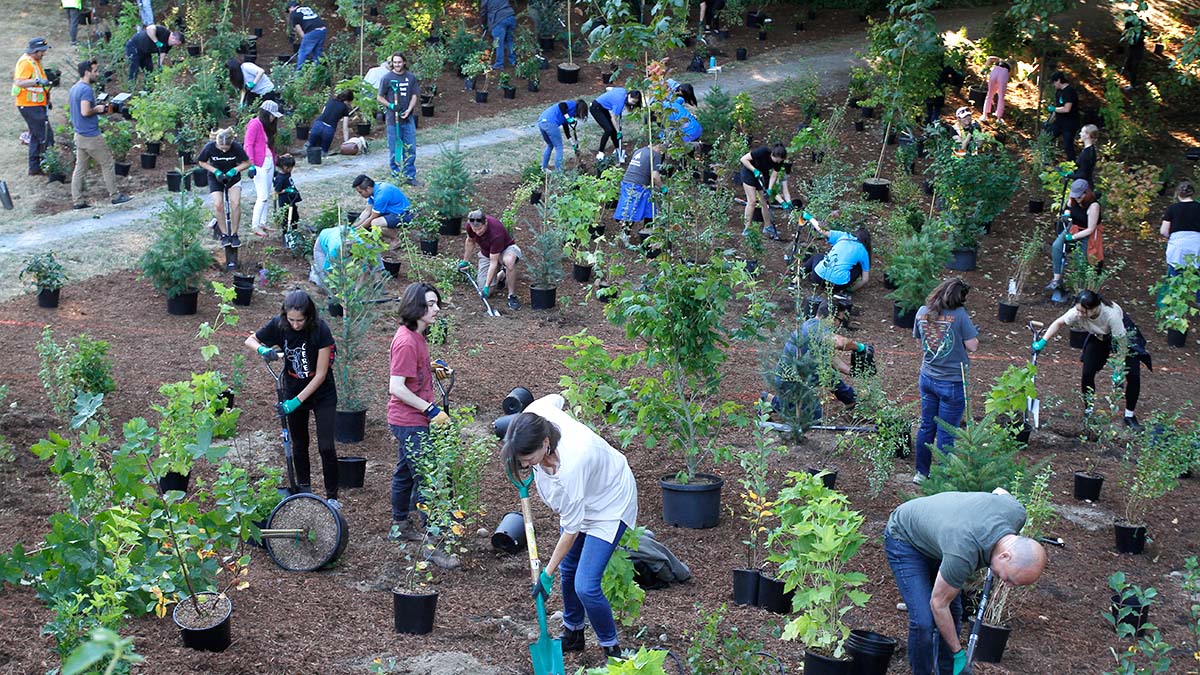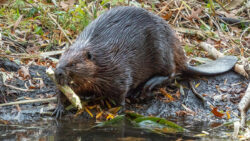This year’s National Tree Day broke records across the country, including in Ottawa, offering a rare bit of good news about Canada’s forests in a year that saw huge swaths burned by wild fires.
Throughout 18 communities, more than 1,500 volunteers planted more than 5,000 trees on Sept. 20, according to Tree Canada.
“Tree Canada is inspired by the fact that Canadians have signed up in record numbers to plant trees with us on National Tree Day,” said Nicole Hurtubise, chief executive officer of Tree Canada in a media release. “In the face of this year’s devastating wildfires, it is heartening to see that more individuals, local groups and businesses are taking meaningful steps to grow Canada’s tree canopy and help us grow better places to live in communities across the country.”
🌳👏 We would like to thank all the volunteers, municipalities, sponsors and supporters that joined us in celebrating #NTD2023! Together we planted over 5,000 trees! We couldn’t have done it without you! See you next year! pic.twitter.com/MD1YUk6mDF
— Tree Canada (@TreeCanada) September 21, 2023
This year alone, at least 6,497 wildfires burned about 16.5 million hectares of land in Canada, doubling the previous worst year in 1989.
Ottawa’s tree planting event was held at Insmill Park in Kanata which sold out shortly after it was announced.
Robert Henri, director of communication at Tree Canada, said that municipalities play a large role in National Tree Day. They pick the planting site and coordinate with their local stakeholders before Tree Canada steps in with funding for the event.
“There is certainly a renewed interest in tree planting and getting involved, and I think part of that is people are seeing the impacts of climate change with our own eyes,” said Henri. “Several hundred communities evacuated because of wildfires and also, for maybe for the first time, millions of Canadians saw the effects of wildfires as there was smoke that blanketed their cities for a week at a time.”
Each year, Tree Canada helps plant more than 1.5 million trees and this year, a main target was on wildfire restoration. In Halifax, for example, the event took place at a site which burned in the spring.
While there is little doubt that planting trees is a valuable ecological practice, particularly in urban settings, there is a debate about the role tree planting plays in the efforts to fight climate change. For example, a 2019 report in the journal Science touting the importance of restoring forests was revised a year later.
In that revision, the authors wrote that “in the original version of the Report, the authors stated in the abstract and in the main text that tree restoration is the most effective solution to climate change to date. This was incorrect. They meant that they know of no other current carbon drawdown solution that is quantitatively as large in terms of carbon capture.”
Some European researchers argue that expanding forests could lead to landscapes that are more prone to fire. Other researchers say that reforestation should be just part of a complex system of measures: “To achieve the desired outcomes, tree-planting efforts must be integrated as one piece of a multifaceted approach to address complex environmental problems,” they wrote.
Katherine Cornel, a 25-year-old environmental advocate and content creator, fears that tree planting could be used as a crutch, where what’s really needed is reducing carbon consumption.
“An issue I have with tree planting is that people use it almost as a greenwashing initiative where they think it cancels out the carbon they’re using, and that simply doesn’t happen,” said Cornel, who makes educational videos on TikTok and Instagram but does not have a background in ecology or environmental sciences.
“If we can remove this idea of offsets, and focus a little bit more on reducing our carbon footprint in the first place and seeing this as an additional way to give back from the carbon that was already previously used up, that would be a better approach,” she said.

“However, I think it’s still a really good sign that so many people are now interested and willing to even put a little bit of money in towards the environment and to, you know, choose options that appear greener,” said Cornel. “We just need a little bit more education in that area.”
While planting so many trees is a laudable goal, some caution that we also need greater attention on broader forestry practices.
“Tree planting is an effective way of mitigating climate change, definitely. Trees are amazing at fixing carbon dioxide and storing it in their bodies, so it’s a great tool,” said Loic D’Orangeville, associate professor in the faculty of forest and environmental management at the University of New Brunswick, who researches forest vulnerability in relation to climate change.
“It’s how it’s done that can be sometimes counterproductive.”
According to D’Orangeville, nearly 600 million trees are planted annually but predominantly for industrial forestry to be cut down and used for commercial purposes.
He says he believes the most important aspect of tree planting is ensuring those new trees mature past two to five years and continue to absorb carbon rather than produce it when they die.
“It’s planting the right tree at the right sites. There are a lot of city trees that are planted by the city (that) die in the first couple of years because it’s not the right species and with climate change, those tree plantations are actually a good tool to make sure that we can help our forests adapt to climate change.”
D’Orangeville added that putting aside funding for tree monitoring and replacement installation after the tree is planted would be a good strategy to ensure the plantations are successful and productive for the ecosystem.




